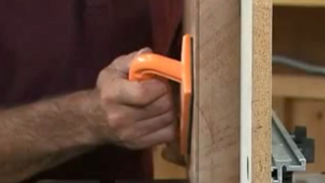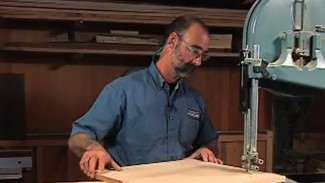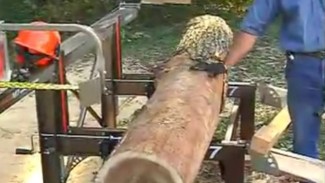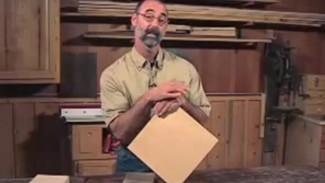One of the really cool things about woodworking? There are SO many different ways to do the tasks we need to do. Here’s a great example; cutting rabbets on a table saw. You might automatically think that you have to own a dado head to do this, or that you’d have to use a router table or hand-held router for this job. Nope. Cutting rabbets on a table saw can easily be done with a standard saw blade, and a few set up tricks.
How does it work?
The thing that lets us get away with this using a single blade is cutting the rabbet in two passes. Part of the key is consistently setting the height of the blade and the position of the rip fence. Brass setup gauges make short work of the set up. Once the setup is done, it’s important to make the cuts correctly. The same face that is down on the table for the first pass must be against the rip fence for the second cut. The edge against the fence of the first pass must be against the fence on the second pass.
The Downside
Your biggest enemy on this technique, and greatest ally, is time. It’s faster to do the set up required for this than it is to put a dado head in the table saw. But because it requires two passes the cutting process is slower, your rabbets will take longer to produce. It’s a trade off.
Learn More About the Table Saw
If you want to make your rabbets, and dadoes, using a dado head, we can help you with the process of setting up and cutting dadoes and rabbets. There’s so much more that a table saw can do. Want to learn what else your saw is capable of? Check our more videos on table saws.





I noticed that George left his riving knife in place while making these cuts. I have the same saw and the riving knife is set as instructed in the SawStop owners manual, slightly above the top arc of the blade. I looked again closely at the video and George’s riving knife is set below the top of the blade. Obviously, you can’t make a housed cut like this if the knife is above the blade; you have to remove it. Is it safe to leave it in position like George has done? I always remove mine, which means I lose the hooded dust collection from the blade area.
Hi James,
Here is what our expert had to say:
My saw is about 13 years old. Page 63 of the owner’s manual shows the riving knife 1 mm below the top of the blade arc. Before making this change to your saw you should check with SawStop.
-George
If you have any other questions, please chat, email, or contact Customer Service at 1-855-253-0822.
Sincerely,
Codi
Woodworkers Guild of America Video Membership
Why didn’t he use a height extension on the fence to support the wood when it was going through the second cut?
Hello. In this case the fence was sufficiently high to safely support the work piece. If you’re working with a piece that is more than double the height of your fence it would be smart to use a height extension on your fence.
Thanks
Paul-WWGOA